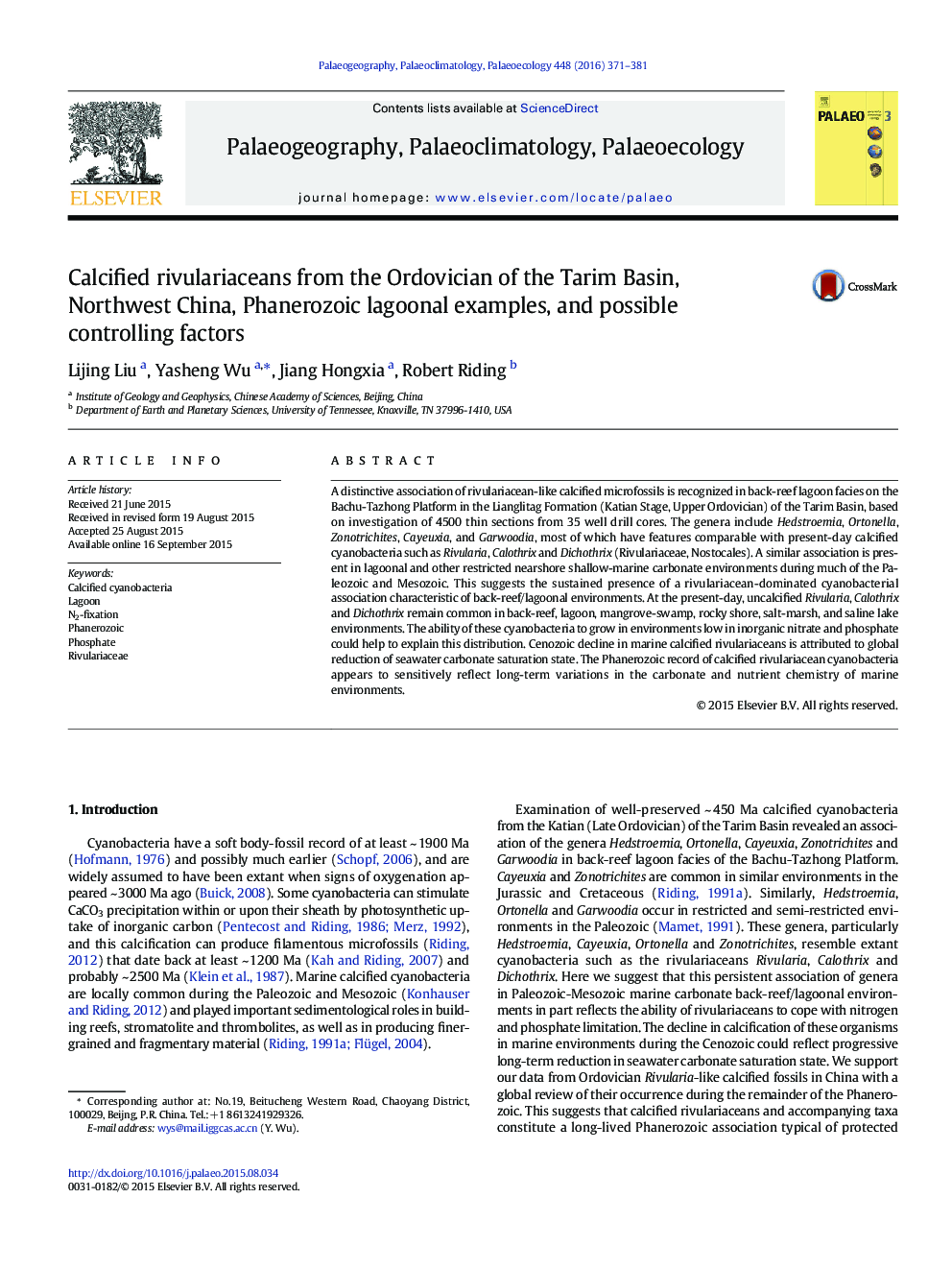| کد مقاله | کد نشریه | سال انتشار | مقاله انگلیسی | نسخه تمام متن |
|---|---|---|---|---|
| 4465860 | 1622143 | 2016 | 11 صفحه PDF | دانلود رایگان |

• Calcified rivulariacean cyanobacteria are common in Late Ordovician platform carbonate lagoon facies of Tarim Basin, China.
• This flora is present in similar facies during much of the Paleozoic and Mesozoic.
• Uncalcified Rivularia, Calothrix, and Dichothrix remain common in present-day lagoonal and other similar restricted environments.
• The abilities of these cyanobacteria to fix nitrogen and utilize organic phosphate could account for this environmental distribution.
• Reduction in seawater carbonate saturation state could explain decline of marine calcified rivulariaceans since the mid-Cretaceous.
A distinctive association of rivulariacean-like calcified microfossils is recognized in back-reef lagoon facies on the Bachu-Tazhong Platform in the Lianglitag Formation (Katian Stage, Upper Ordovician) of the Tarim Basin, based on investigation of 4500 thin sections from 35 well drill cores. The genera include Hedstroemia, Ortonella, Zonotrichites, Cayeuxia, and Garwoodia, most of which have features comparable with present-day calcified cyanobacteria such as Rivularia, Calothrix and Dichothrix (Rivulariaceae, Nostocales). A similar association is present in lagoonal and other restricted nearshore shallow-marine carbonate environments during much of the Paleozoic and Mesozoic. This suggests the sustained presence of a rivulariacean-dominated cyanobacterial association characteristic of back-reef/lagoonal environments. At the present-day, uncalcified Rivularia, Calothrix and Dichothrix remain common in back-reef, lagoon, mangrove-swamp, rocky shore, salt-marsh, and saline lake environments. The ability of these cyanobacteria to grow in environments low in inorganic nitrate and phosphate could help to explain this distribution. Cenozoic decline in marine calcified rivulariaceans is attributed to global reduction of seawater carbonate saturation state. The Phanerozoic record of calcified rivulariacean cyanobacteria appears to sensitively reflect long-term variations in the carbonate and nutrient chemistry of marine environments.
Journal: Palaeogeography, Palaeoclimatology, Palaeoecology - Volume 448, 15 April 2016, Pages 371–381